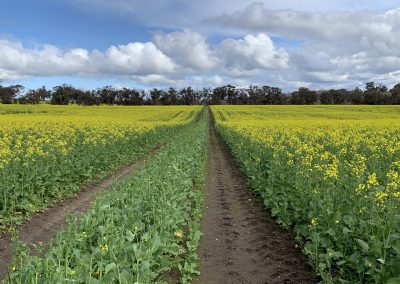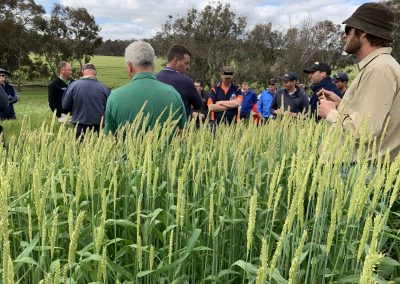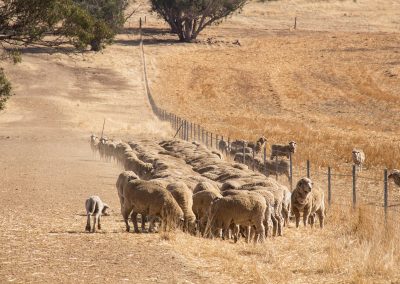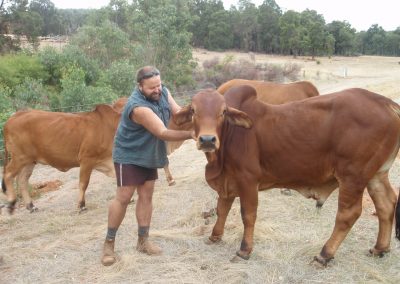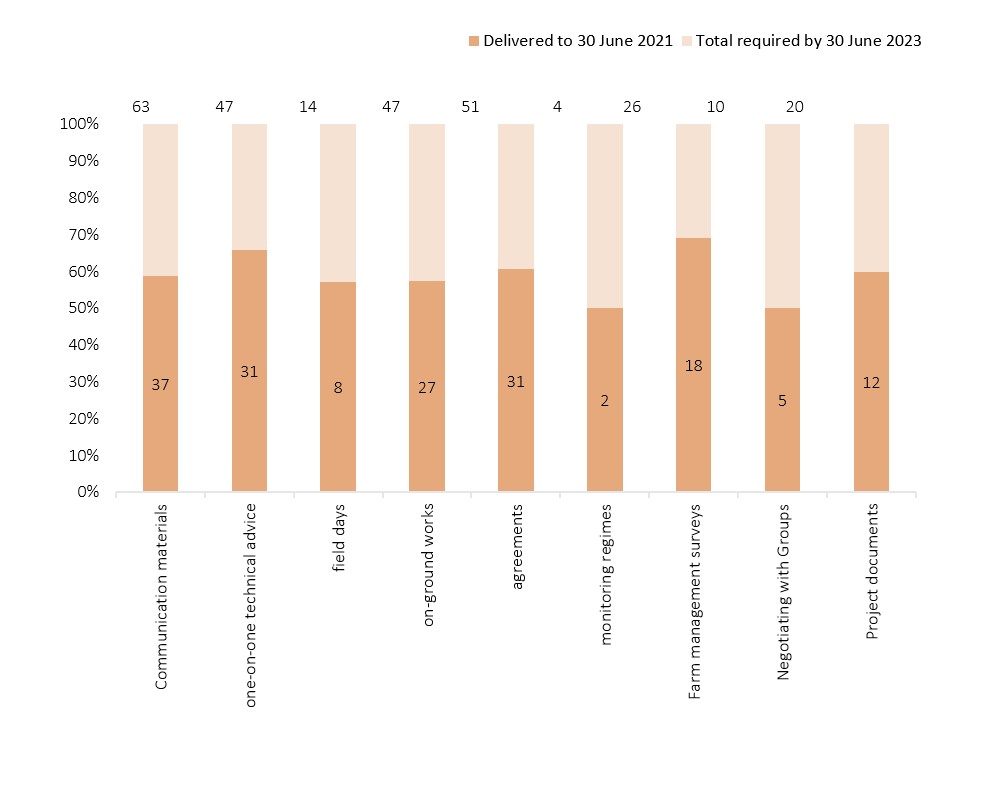Supporting the following Objectives
Greening Farms
Greening the Peel-Harvey Landscape for Farming, Fodder and Fauna

Long Term Goal
By 2050, productive agricultural systems and a healthy environment are intrinsically linked
Regional Land Partnerships (Australian Government) Outcomes
Primary Outcome:
By 2023, there will be increased awareness and adoption of land management practices that improve and protect the condition of soil, biodiversity and vegetation
- Primary Investment Priority: Vegetation and biodiversity on farms
Secondary Outcome:
By 2023, the implementation of priority actions is leading to an improvement in the condition of EPBC Act listed Threatened Ecological Communities
- Secondary Investment Priorities: Eucalyptus Woodlands of the Western Wheatbelt, Banksia Woodlands of the Swan Coastal Plain
By 2023, there will be increased awareness and adoption of land management practices that improve and protect the condition of soil, biodiversity and vegetation
- Secondary Investment Priority: Reducing the risk of soil and nutrient loss from wind erosion and reducing the risk of soil and nutrient loss from hillslopes
Despite economic, climatic and production challenges presented over the past few decades, our farming community continues to adapt and rural production remains strong.
With ~50% of our region owned and managed by our farming community, our farmers play a significant role in natural resource management, and are actively engaged in activities to protect our biodiversity, soils and production.
Our ‘Greening Farms’ project works with farmers to protect, enhance and plant native vegetation on farms across the Peel-Harvey Region to improve protection of existing vegetation and utilise innovative management techniques to increase farm biodiversity, productivity & improve soil condition.
‘Greening Farms” will support our farming community with technical advice, field days (including farmers teaching farmers), on-farm surveys and importantly, on-ground support and will result in at least 1300 ha of on-ground works or protection agreements & will directly involve over 250 farmers over the 5 years. Attention to native vegetation that is degraded or in urgent need of protection will be one of the project’s priorities.
A regional prioritisation of all on-farm vegetation and the establishment of experimental planting trials will occur in consultation with farmers to set project priorities and address long-term, landscape scale natural resource management issues including climate adaptation.
For more detail on the project, please view the project summary here.
On-farm native vegetation plays a critical role at multiple scales, assisting farmers to maintain stock and crop production levels, maintaining biodiversity and protecting the water quality of the Peel-Harvey Estuary. It also helps farmers to adapt to changes in climate including reductions in winter rainfall an increasing summer storm events.
Both major farming areas in the Catchment have been extensively cleared, with only 15% of the Swan Coastal Plain and 19% of the Hotham Williams Catchments supporting native vegetation. Of that vegetation, many remnant areas are small in size or declining in condition due to uncontrolled stock access, weeds, feral animals, dieback disease, fragmentation, and altered fire regimes. Many paddock trees, which provide rare habitat I cleared paddocks are not being replaced.
Declines in native vegetation condition are likely to be contributing to the loss of native species, increase in pest insect imbalances, and pollution of downstream waterways with nutrients and sediment.

Key Threats
- Changing climate
- Frost
- Declining rainfall
- Fire
- Biosecurity (weeds and pests)
- Wind erosion (loss of topsoil)
- Salinity
- Soil and nutrient toss from hillslope (water) erosion
Management Actions
Biophysical
- Pest and weed control (Landowner grants)
- Revegetation and palatable native species (Landowner grants)
- Land Stewardship Programs
- On-farm trials – vegetation and soil health
- Access Control (Landowner grants)
Non Biophysical
- Prioritisation of farm vegetation across Region
- Farmer demonstration/field days
- Knowledge extension workshops/events
- Media and Promotion (education and awareness)
- Farm Case Studies
- Social media communications to farmers
- One on One technical advice to farmers
- Farm surveys and site assessments

Working Together
The PHCC is delivering the Greening Farms project in collaboration with the following:
- Department of Primary Industries and Regional Development (DPRID)
- SJ Food and Farm Alliance
- Southern Dirt
- NRM WA
- Farmers, landowners and managers
Project outcomes
Changes in Asset (by 2023)
1300 ha of on-farm vegetation will be under improved management to protect the condition of soil, vegetation and biodiversity
400 ha of on-farm native vegetation will be covered by agreements to protect or manage for multiple benefits
Monitoring and Evaluation
An effective monitoring and evaluation framework is being used to ensure the Project delivers on its outcomes.
Our PHCC project logic provided the framework for the design, delivery, review and evaluation of this project. An adaptive management approach is being used to monitor, evaluate, review and improve the methods of delivering project services to meet the needs of our farming community.
Short and medium term outcomes have been developed and will contribute to the long term outcomes.
Management Actions (outputs) are detailed on the graph below, with progress in delivery up to June 30, 2021 showing that we are on target to meet our targets, as defined in our Agreement with the Australian Government.
Greening Farms Project delivery to June 30 2021
Practice and Attitude Change (by 2023)
6 case studies will be prepared to showcase innovative land management practices
250 farmers will be provided with technical information on management options for native vegetation in the Peel-Harvey catchment, including both proven and innovative approaches
50 farmers will have adopted improved land management practices for native vegetation and biodiversity

